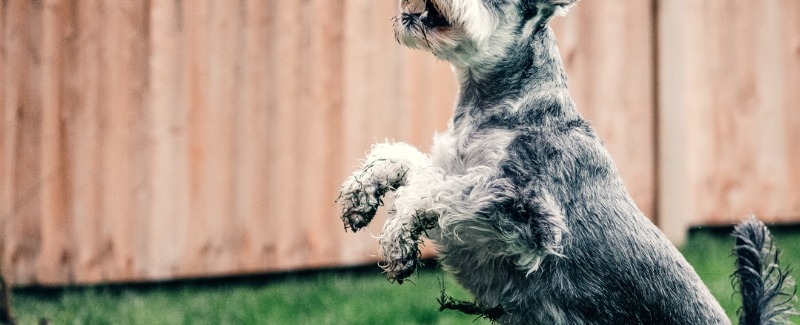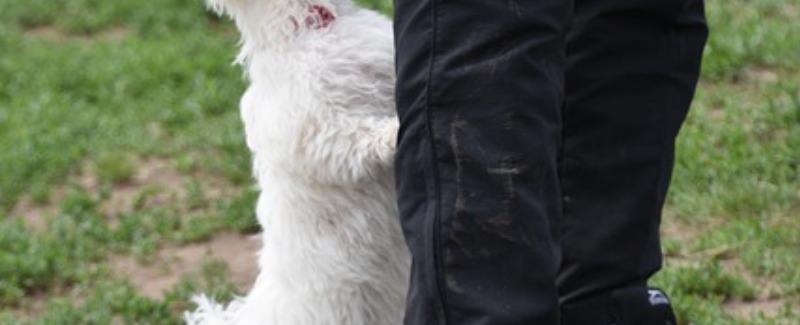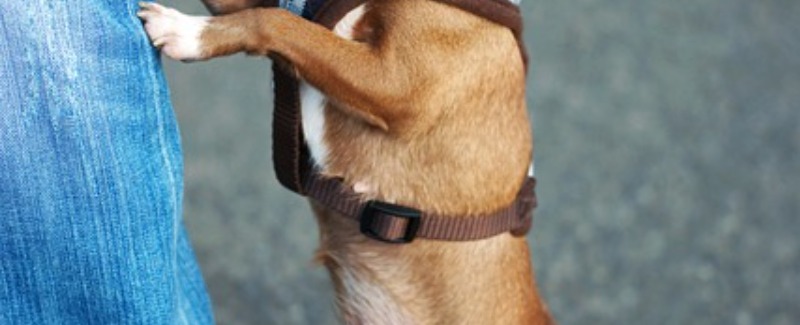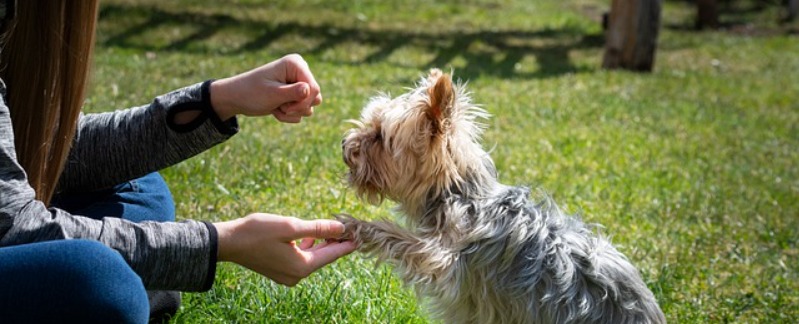You need to teach your little jumping bean what to do instead of jumping. During the process, you have to do something to keep him from being successful in getting his feet on people.
Controlling Jumping at Home
If your dog is like most pet dogs, he spends the majority of his time at home. Hopefully, for his socialization if not yours, you or family members have visitors on a regular basis. If he already has a habit of jumping up, you have to have a way to control him before visitors enter your home until he learns his new, more appropriate greeting behavior, Hoping for the best and yelling “Sit! Siddown! Get off! Sit! Sit! Sit!” while you make a mad grab for his collar probably hasn’t been working too well so far, so it’s time to do a little reconnaissance and make a plan.
Don’t Wait For the Doorbell to Ring
You have to be ready with a way to control your dog before the doorbell rings. If you’re not, it’s going to be the usual hysteria, and one more deposit into your dog’s jumping behavior bank. There are several easy things that you can do to control your dog when the doorbell rings:
- Install a short tether at least 6 feet from the door. Tethers can be attached to a strategically placed eyebolt in a baseboard or to a sturdy piece of furniture.
- Keep a dragline or leash on your dog, or at least near the door. You can step on the leash or use it to correct your dog if he jumps.
- Put your dog away, either crated or in another room, before answering the door.
If your dog gets hysterical when the bell rings, the visitor can stand out of his reach or you can physically restrain the dog. Have the visitor completely ignore him until he’s calm; don’t allow even eye contact! The visitor may have to spend some time with their arms folded, staring at the ceiling, until your dog can relax enough to respond to a sit command. Only then should the visitor pay him any attention.
Start with just a little eye contact and some quiet praise and work up to petting. Quit if he starts to lose it, and quit on success, even if success means the visitor can only give him a quick glance for that session. It’ll get better each time. Don’t keep barking commands at the dog when he’s wound up. Just stay calm and wait for him to calm down, too. If it’s not a convenient time to work on it, tether or crate your dog.
Outdoor Strategies
If your dog is going be around people, you must have a way to physically control him. This generally means a collar and leash because you can stand on the leash (with both feet), giving him just enough room to stand up or sit comfortably. He should only be able to get his front feet a few inches off the ground so if he tries to jump, he corrects himself.
Every person who wants to greet him should use the same system you did with indoor greetings: by ignoring hysterical behavior and rewarding calm behavior.





